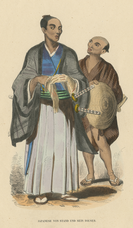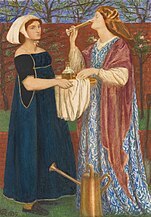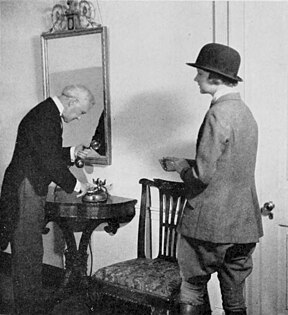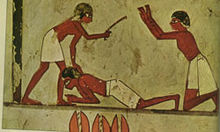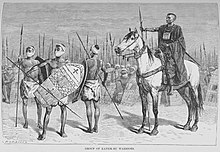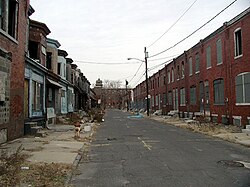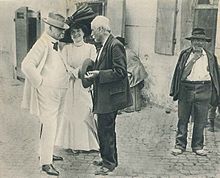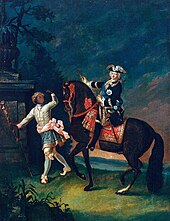
Social status is the relative level of social value a person is considered to possess. Such social value includes respect, honor, assumed competence, and deference. On one hand, social scientists view status as a "reward" for group members who treat others well and take initiative. This is one explanation for its apparent cross-cultural universality. On the other hand, while people with higher status experience a litany of benefits—such as greater health, admiration, resources, influence, and freedom—those with lower status experience poorer outcomes across all of those metrics.
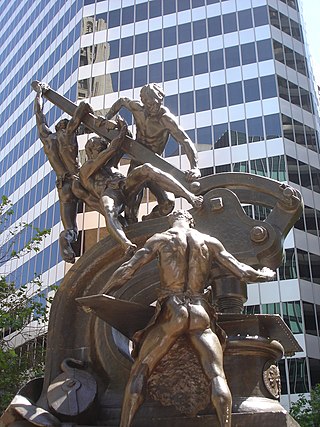
Social class in the United States refers to the idea of grouping Americans by some measure of social status, typically by economic status. However, it could also refer to social status and/or location. The idea that American society can be divided into social classes is disputed, and there are many competing class systems.

The middle class refers to a class of people in the middle of a social hierarchy, often defined by occupation, income, education, or social status. The term has historically been associated with modernity, capitalism and political debate. Common definitions for the middle class range from the middle fifth of individuals on a nation's income ladder, to everyone but the poorest and wealthiest 20%. Theories like "Paradox of Interest" use decile groups and wealth distribution data to determine the size and wealth share of the middle class.

Conflict theories are perspectives in political philosophy and sociology which argue that individuals and groups within society interact on the basis of conflict rather than agreement, while also emphasizing social psychology, historical materialism, power dynamics, and their roles in creating power structures, social movements, and social arrangements within a society. Conflict theories often draw attention to power differentials, such as class conflict, or a conflict continuum. Power generally contrasts historically dominant ideologies, economies, currencies or technologies. Accordingly, conflict theories represent attempts at the macro-level analysis of society.
The term social order can be used in two senses: In the first sense, it refers to a particular system of social structures and institutions. Examples are the ancient, the feudal, and the capitalist social order. In the second sense, social order is contrasted to social chaos or disorder and refers to a stable state of society in which the existing social structure is accepted and maintained by its members. The problem of order or Hobbesian problem, which is central to much of sociology, political science and political philosophy, is the question of how and why it is that social orders exist at all.

Social mobility is the movement of individuals, families, households or other categories of people within or between social strata in a society. It is a change in social status relative to one's current social location within a given society. This movement occurs between layers or tiers in an open system of social stratification. Open stratification systems are those in which at least some value is given to achieved status characteristics in a society. The movement can be in a downward or upward direction. Markers for social mobility such as education and class, are used to predict, discuss and learn more about an individual or a group's mobility in society.
Upper class in modern societies is the social class composed of people who hold the highest social status, usually are the wealthiest members of class society, and wield the greatest political power. According to this view, the upper class is generally distinguished by immense wealth which is passed on from generation to generation. Prior to the 20th century, the emphasis was on aristocracy, which emphasized generations of inherited noble status, not just recent wealth.

Social stratification refers to a society's categorization of its people into groups based on socioeconomic factors like wealth, income, race, education, ethnicity, gender, occupation, social status, or derived power. It is a hierarchy within groups that ascribe them to different levels of privileges. As such, stratification is the relative social position of persons within a social group, category, geographic region, or social unit.
In developed nations around the world, the lower middle class is a subdivision of the greater middle class. Universally, the term refers to the group of middle class households or individuals who have not attained the status of the middle or upper middle class associated with the higher realms of the middle class, hence the name.
Social position is the position of an individual in a given society and culture. A given position may belong to many individuals.

In political and sociological theory, the elite are a small group of powerful people who hold a disproportionate amount of wealth, privilege, political power, or skill in a group. Defined by the Cambridge Dictionary, the "elite" are "the richest, most powerful, best-educated, or best-trained group in a society."
Life chances is a theory in sociology which refers to the opportunities each individual has to improve their quality of life. The concept was introduced by German sociologist Max Weber in the 1920s. It is a probabilistic concept, describing how likely it is, given certain factors, that an individual's life will turn out a certain way. According to this theory, life chances are positively correlated with one's socioeconomic status.
Though the American middle class does not have a definitive definition, contemporary social scientists have put forward several ostensibly congruent theories on it. Depending on the class model used, the middle class constitutes anywhere from 25% to 75% of households.

The American upper class is a social group within the United States consisting of people who have the highest social rank, due to economic wealth, lineage, and typically educational attainment. The American upper class is estimated to be the richest 1% of the population.

Social reproduction describes the reproduction of social structures and systems, mainly on the basis of particular preconditions in demographics, education and inheritance of material property or legal titles. Reproduction is understood as the maintenance and continuation of existing social relations. Originally formulated by Karl Marx in Das Kapital, this concept is a variety of Marx's notion of economic reproduction.

Social inequality occurs when resources within a society are distributed unevenly, often as a result of inequitable allocation practices that create distinct unequal patterns based on socially defined categories of people. Differences in accessing social goods within society are influenced by factors like power, religion, kinship, prestige, race, ethnicity, gender, age, sexual orientation, intelligence and class. Social inequality usually implies the lack of equality of outcome, but may alternatively be conceptualized as a lack of equality in access to opportunity.
Elitism is the notion that individuals who form an elite — a select group with desirable qualities such as intellect, wealth, power, physical attractiveness, notability, special skills, experience, lineage — are more likely to be constructive to society and deserve greater influence or authority. The term elitism may be used to describe a situation in which power is concentrated in the hands of a limited number of people. Beliefs that are in opposition to elitism include egalitarianism, anti-intellectualism, populism, and the political theory of pluralism.
In Marxism, class consciousness is the set of beliefs that persons hold regarding their social class or economic rank in society, the structure of their class, and their common class interests. According to Karl Marx, class consciousness is an awareness that is key to sparking a revolution which would "create a dictatorship of the proletariat, transforming it from a wage-earning, propertyless mass into the ruling class".

The working class is a subset of employees who are compensated with wage or salary-based contracts, whose exact membership varies from definition to definition. Members of the working class rely primarily upon earnings from wage labour. Most common definitions of "working class" in use in the United States limit its membership to workers who hold blue-collar and pink-collar jobs, whose income is insufficiently high to place them in the middle class, or both. However, socialists define "working class" to include all workers who fall into this category; thus, this definition can include almost all of the working population of industrialized economies.
The spoon class theory refers to the idea that individuals in a country can be classified into different socioeconomic classes based on the assets and income level of their parents, and as a consequence, one's success in life depends entirely on being born into a wealthy family. The term appeared in 2015 and was first widely used among online communities in South Korea.
